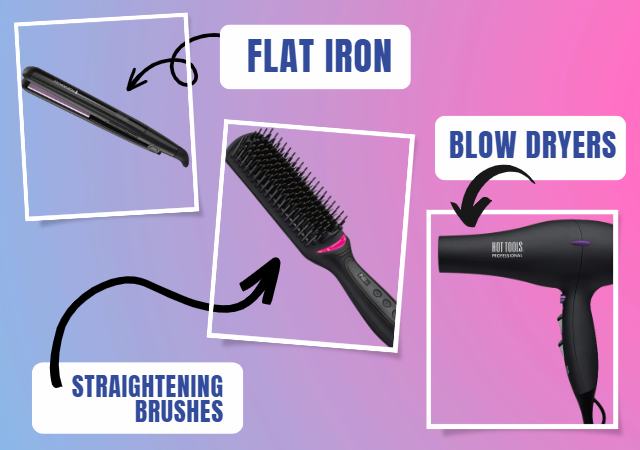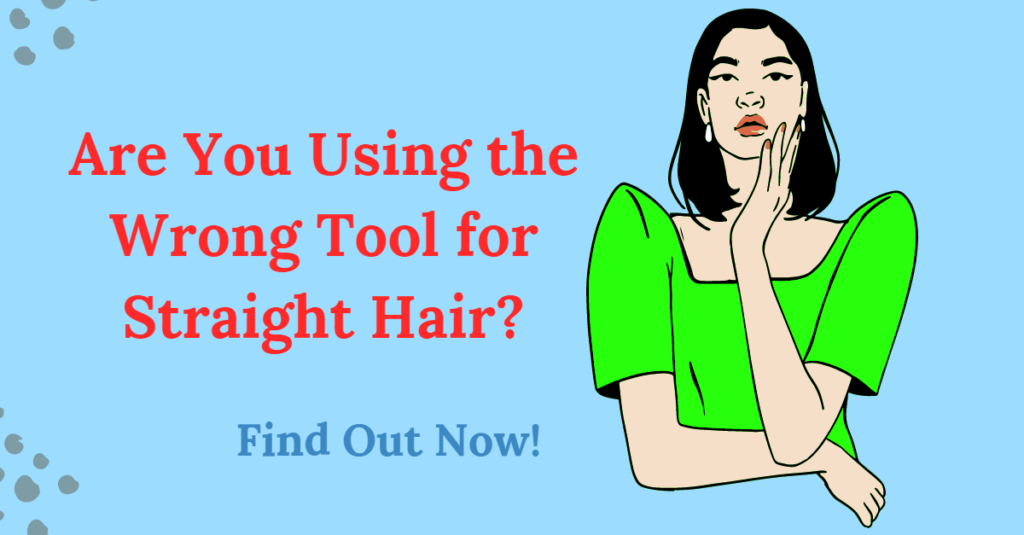Are You Using the Wrong Tool for Straight Hair? Find Out Now!
Straight hair can be a blessing or a curse, depending on your perspective. On one hand, it’s easy to manage and can be styled quickly. On the other hand, it can be difficult to add volume or texture, and using the wrong tools can lead to damage and breakage. If you have straight hair and are struggling to find the right styling tool, this article is for you.
The first step to finding the right tool for straight hair is to understand the different types of tools available. There are three main categories: flat irons, straightening brushes, and blow dryers.

Flat irons are the most common tool used to straighten hair. They work by clamping down on a small section of hair and then sliding the iron down the length of the hair. Flat irons are effective at straightening even the most stubborn hair, but they can also cause damage if used incorrectly. Heat damage, split ends, and breakage are all common issues associated with flat iron use.
Straightening brushes are a newer tool that has gained popularity in recent years. They work by using heated bristles to detangle and straighten hair simultaneously. Unlike flat irons, straightening brushes are gentle on hair and can be used more frequently without causing damage. They are also a good option for those with fine or thin hair, as they can add volume without weighing hair down.
Blow dryers are the third type of tool commonly used to straighten hair. While blow dryers alone won’t give you pin-straight hair, they can be a good option for those who want a more natural, voluminous look. Blow dryers work by blowing hot air onto damp hair, which can be manipulated with a round brush to create a straighter style.
Now that you know the different types of tools available, it’s important to choose the right one for your hair type and desired style. Here are some tips to help you choose the right tool for straight hair:
1. Consider your hair type
Different hair types require different tools. If you have fine or thin hair, a straightening brush may be the best option as it can add volume without weighing hair down. If you have thick or coarse hair, a flat iron may be more effective as it can straighten even the most stubborn hair.
2. Think about your desired style
Do you want pin-straight hair, or do you prefer a more natural, voluminous look? If you want pin-straight hair, a flat iron is likely your best option. If you prefer a more natural look, a blow dryer and round brush may be the way to go.
3. Consider the health of your hair
Using heat tools on a regular basis can cause damage to hair, so it’s important to choose a tool that is gentle on hair. Straightening brushes are generally the gentlest option, followed by blow dryers and then flat irons. If you have damaged hair or are prone to breakage, a straightening brush may be the best option for you.
4. Invest in quality tools
Cheap tools may seem like a good deal, but they often lack the features and technology needed to protect hair from damage. Investing in quality tools may be more expensive upfront, but it can save you money in the long run by preventing damage and breakage.
5. Use heat protectant
No matter what tool you choose, it’s important to use a heat protectant to prevent damage to your hair. Heat protectant sprays and creams create a barrier between your hair and the heat tool, reducing the risk of damage and breakage.
In addition to choosing the right tool for your hair, it’s important to use the tool correctly to prevent damage. Here are some tips for using heat tools safely and effectively:
1. Start with clean, dry hair
Using heat tools on damp or wet hair can cause damage and breakage. Make sure your hair is completely dry before using a flat iron, straightening brush, or blow dryer.
2. Use the right temperature
Different hair types require different temperatures. Fine or thin hair should be styled at lower temperatures, while thick or coarse hair may require higher temperatures. Most heat tools come with adjustable temperature settings, so make sure to choose the right temperature for your hair type.
3. Section your hair
Working in small sections can make it easier to style your hair and reduce the risk of damage. Use clips to section your hair into manageable sections before styling.
4. Don’t leave the tool on one section for too long
Leaving a heat tool on one section of hair for too long can cause damage and breakage. Move the tool down the length of your hair in a smooth, continuous motion to prevent damage.
5. Use a comb or brush with your heat tool
Using a comb or brush with your heat tool can help to distribute heat evenly and reduce the risk of damage. For flat irons and straightening brushes, use a comb to detangle hair before styling. For blow dryers, use a round brush to create a smooth, straight style.
In conclusion, finding the right tool for straight hair can be a challenge, but with the right information and tips, it’s possible to achieve the style you want without causing damage to your hair. Remember to consider your hair type, desired style, and the health of your hair when choosing a tool, and always use heat protectant and follow safe styling practices to prevent damage and breakage.

My name is Rohit Vagh and I’m a content writer specializing in fashion and lifestyle. I have three years of experience in this field and have written various articles. My writing style is creative and engaging, and I strive to create content that resonates with my readers. I have a deep passion for fashion and am constantly researching the latest trends and styles to make sure my readers are up to date. I’m excited to continue my career in blogging, and I’m always looking for new opportunities in the fashion and lifestyle space.





